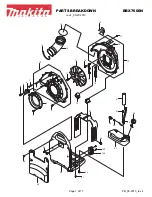
- 10 -
18
/
The Sparx 18/30 has a DMX-in and DMX-out connector. Now connect the DMX output of your
controller to the 1st Sparx 18/30 (controller DMX-Out -> Sparx 18/30 DMX-In). Then the 1st
Sparx 18/30 to the 2nd Sparx 18/30 (Sparx 18/30 DMX-Out -> Sparx 18/30 DMX-In) and so on.
In some cases, it is advisable to insert an end connector (XLR connector with a 120 Ohm resistor
between pin 2 and pin 3). Whether an end connector is required depends on various factors,
including the cable lengths used and the number of devices. However, as long as no problems
occur in the DMX line, this is not necessary.
3.4 Signal connections
The DMX cabling (signal lines) should be done with a 4-pin cable with shielding. We recommend
a DMX cable (110 Ohm, 4x0.22mm
2
), alternatively a 2-pole micro cable can be used. The plugs
and sockets are 5-pin XLR connectors, which can be purchased in specialist shops.
Pin assignment:
Pin1 = Ground/Shielding
Pin2 = DMX -
Pin3 = DMX +
Pin4 = Data out -
Pin5 = Data out +
1
2
3
4
5
1
2
3
4
5
Cable with shielding
3.4.1 DMX cabling
3.4.2 Ethernet cabling
Ethernet cabling can be done with standard network lines. The sockets on the device are Neutrik
etherCON sockets. Special cables with etherCON connectors are recommended by Neutrik. The
two sockets on the Sparx 18/30 are connected to each other via a switch. Up to 10 devices can
be connected in series without any delay. Of course, the spotlights can also be supplied in a star
configuration via an external switch.
3.4.3 Wireless reception
The Sparx 18/30 is equipped with a
Lumen radio
CRMX receiver for wireless DMX as standard.
The receiver can process both DMX and RDM. If a cable and wireless connection are connected
to the Sparx 18/30, the cable connection has priority! The received signal can be output via DMX
and Ethernet as of software version 1.5.
Summary of Contents for Sparx 18
Page 1: ...Operating instructions Version 1 01 Software 1 00 1 8...
Page 2: ...02 1 8...
Page 47: ...47 1 8...











































